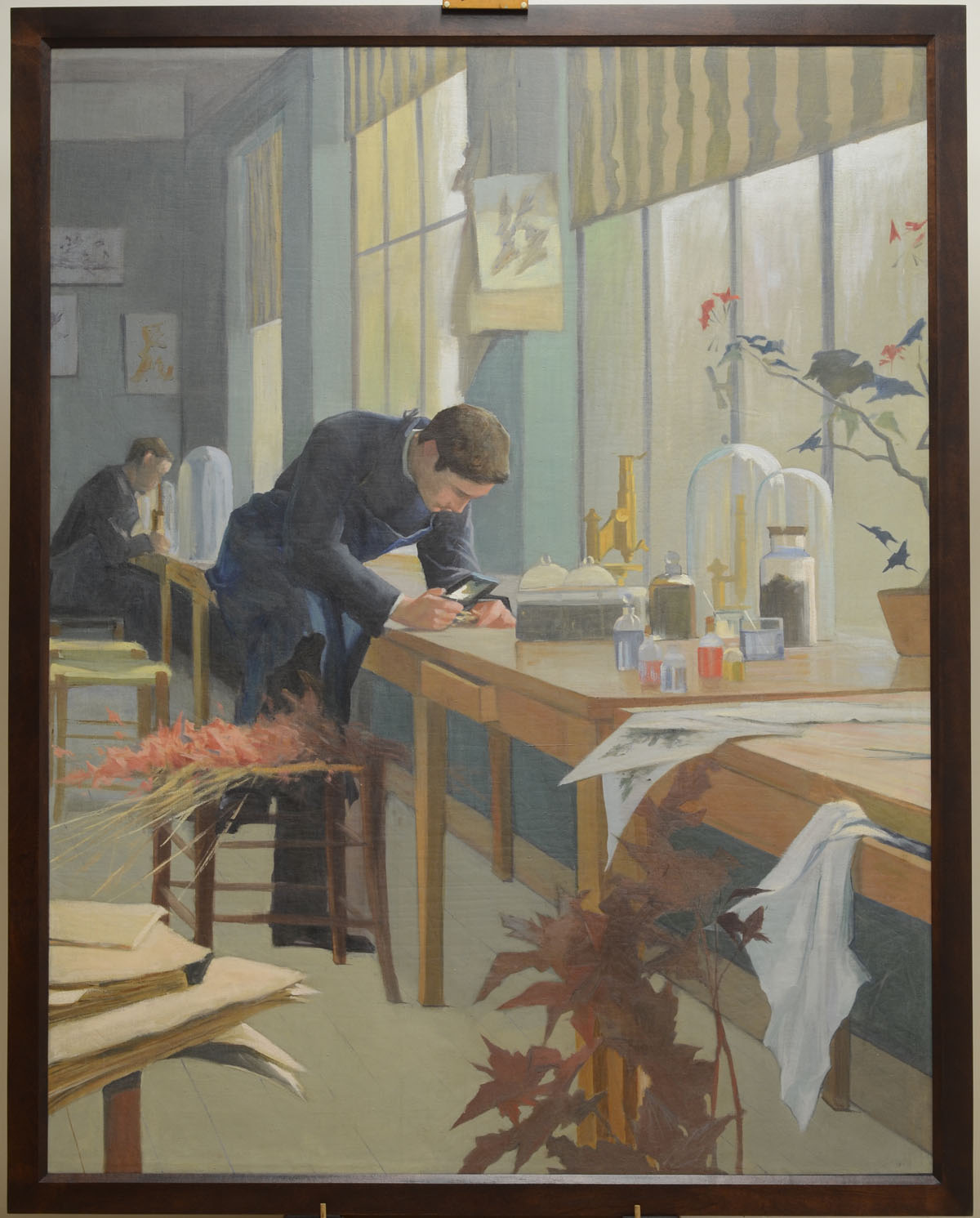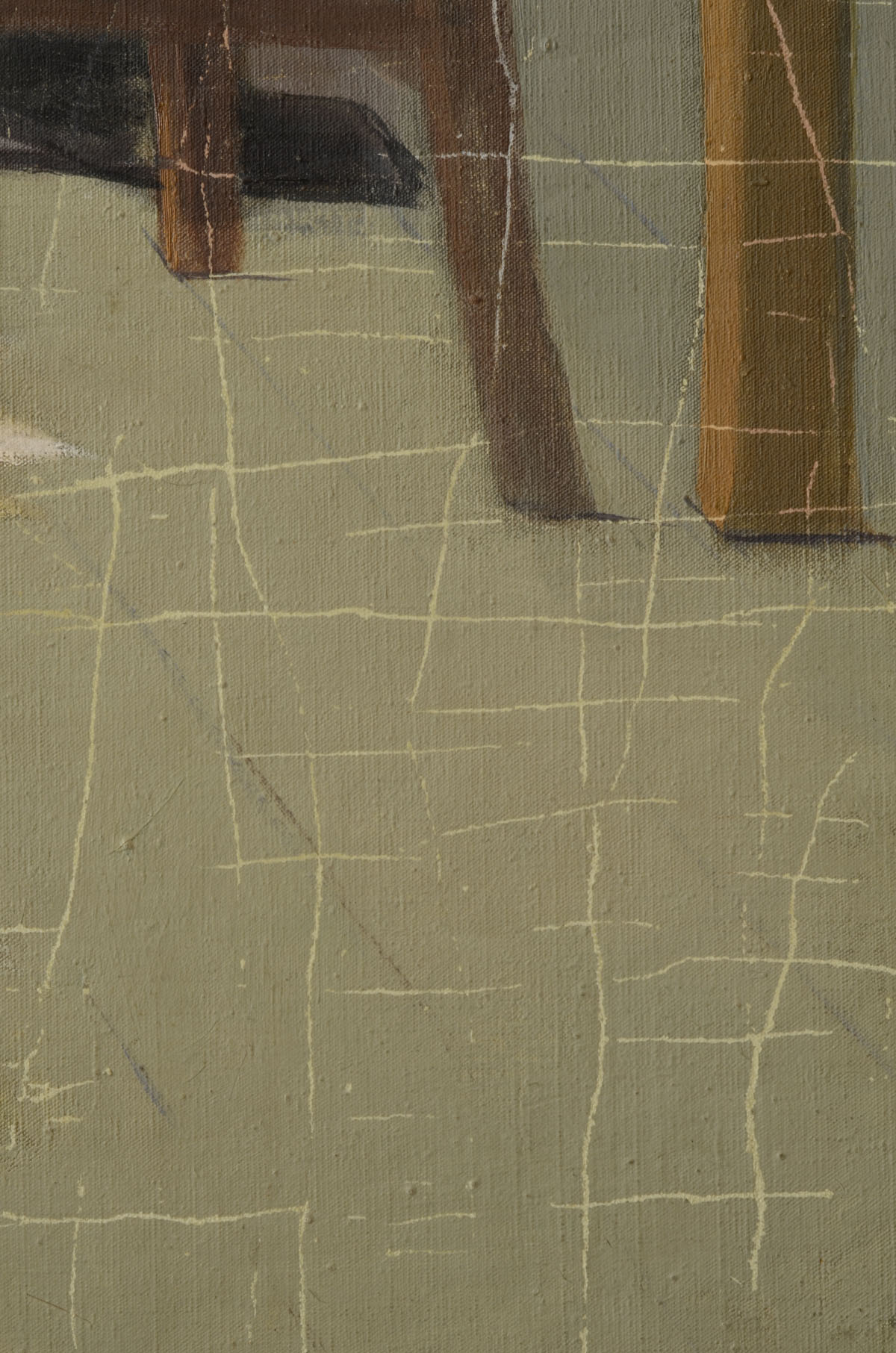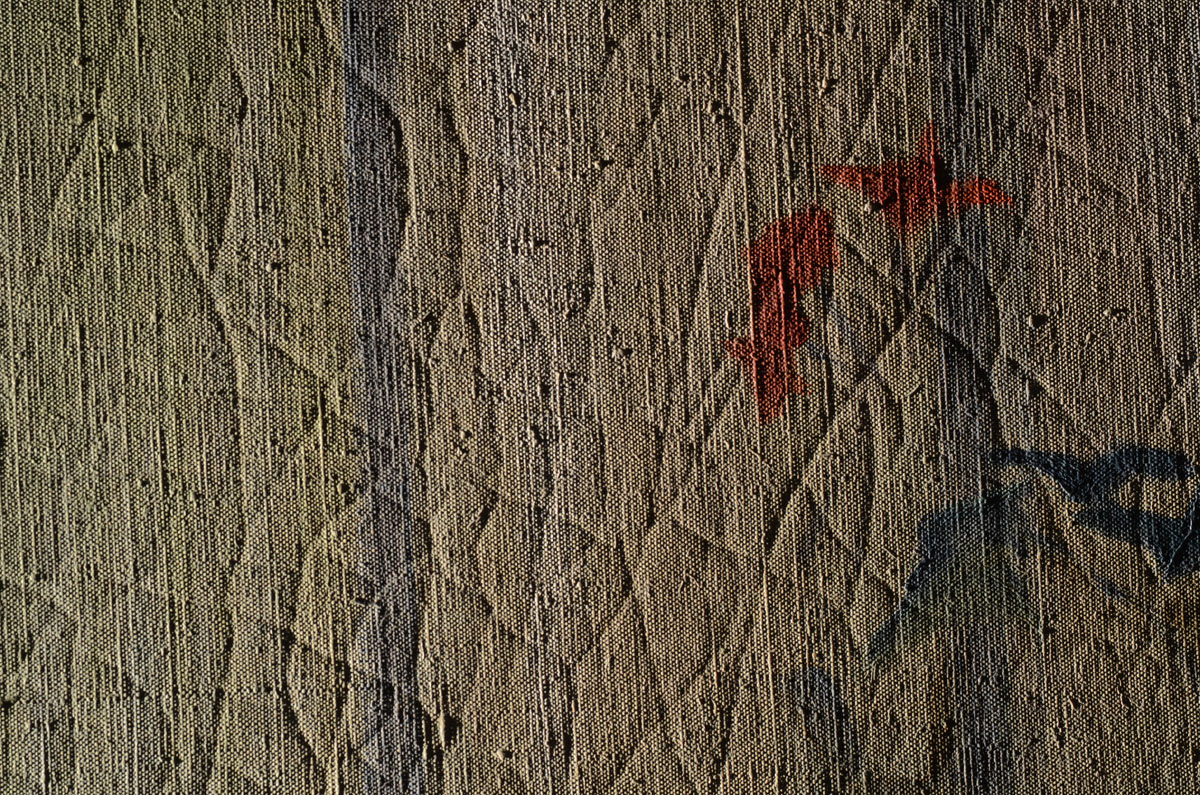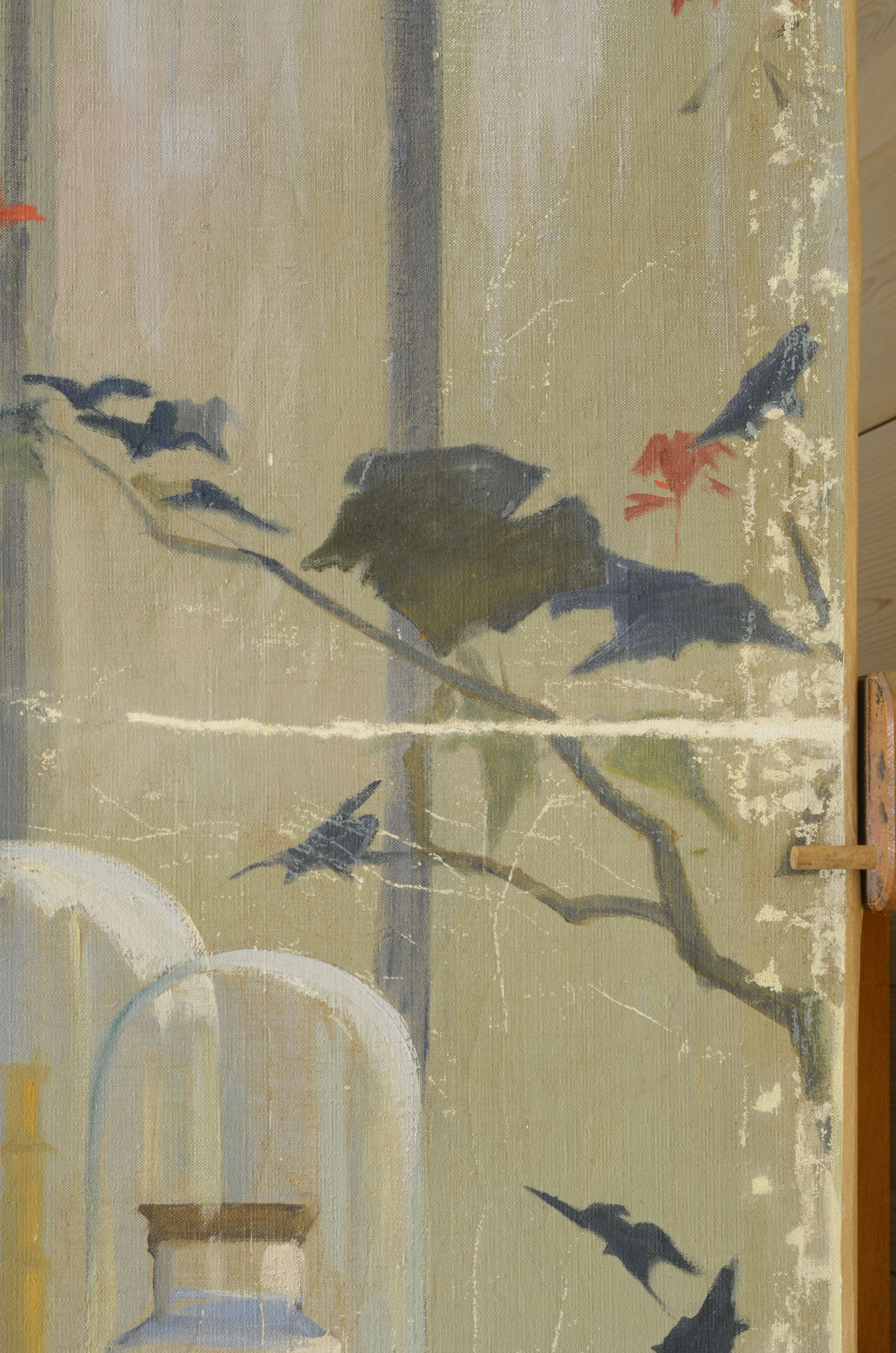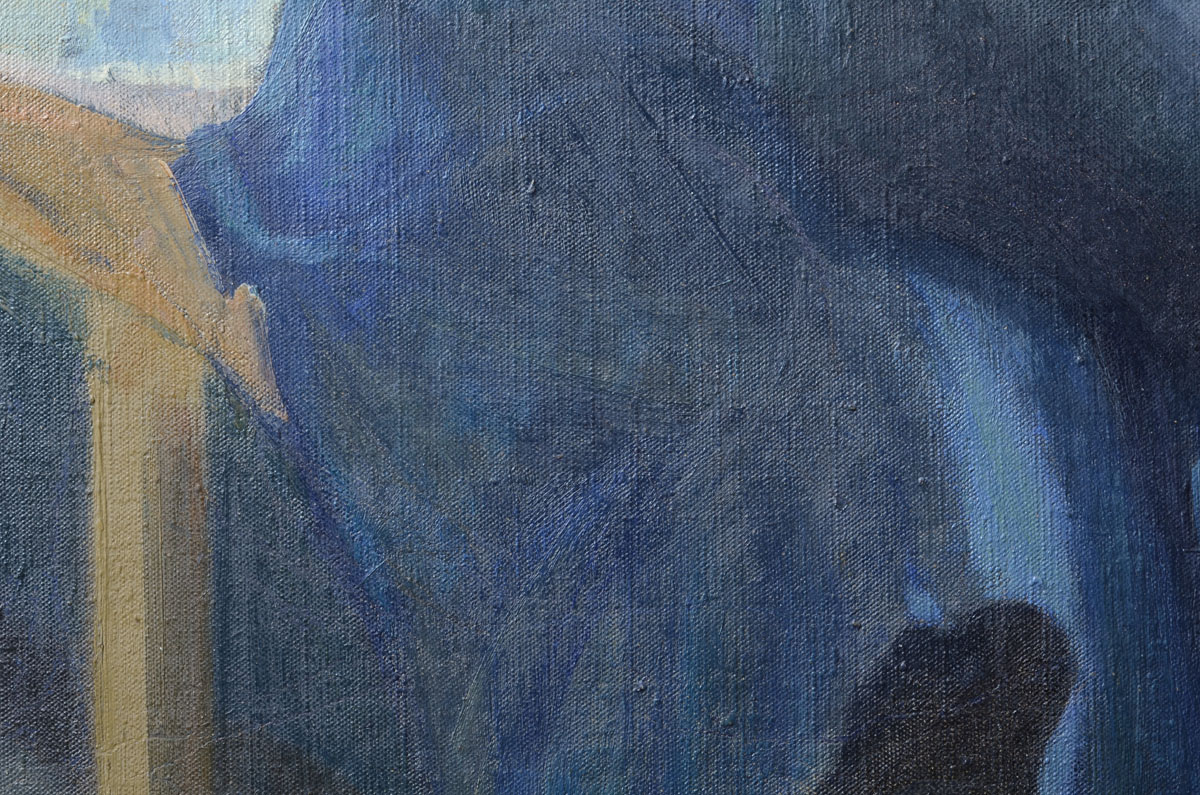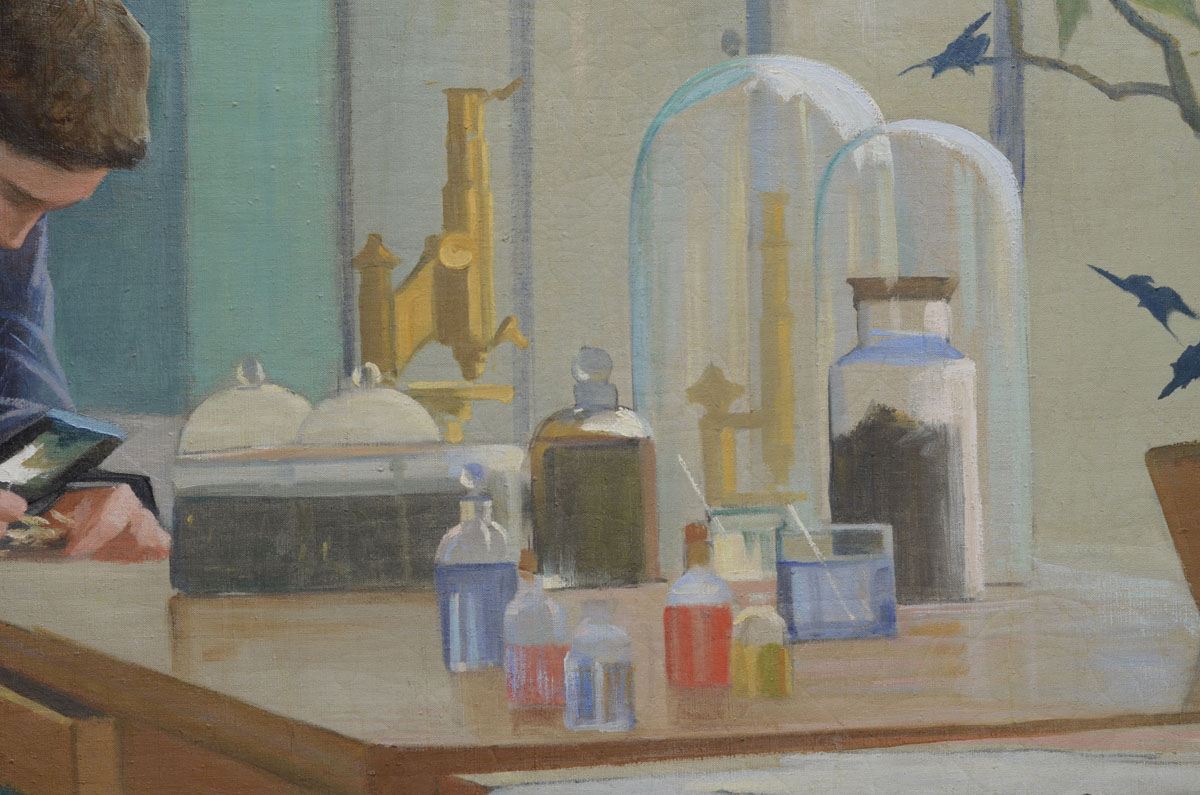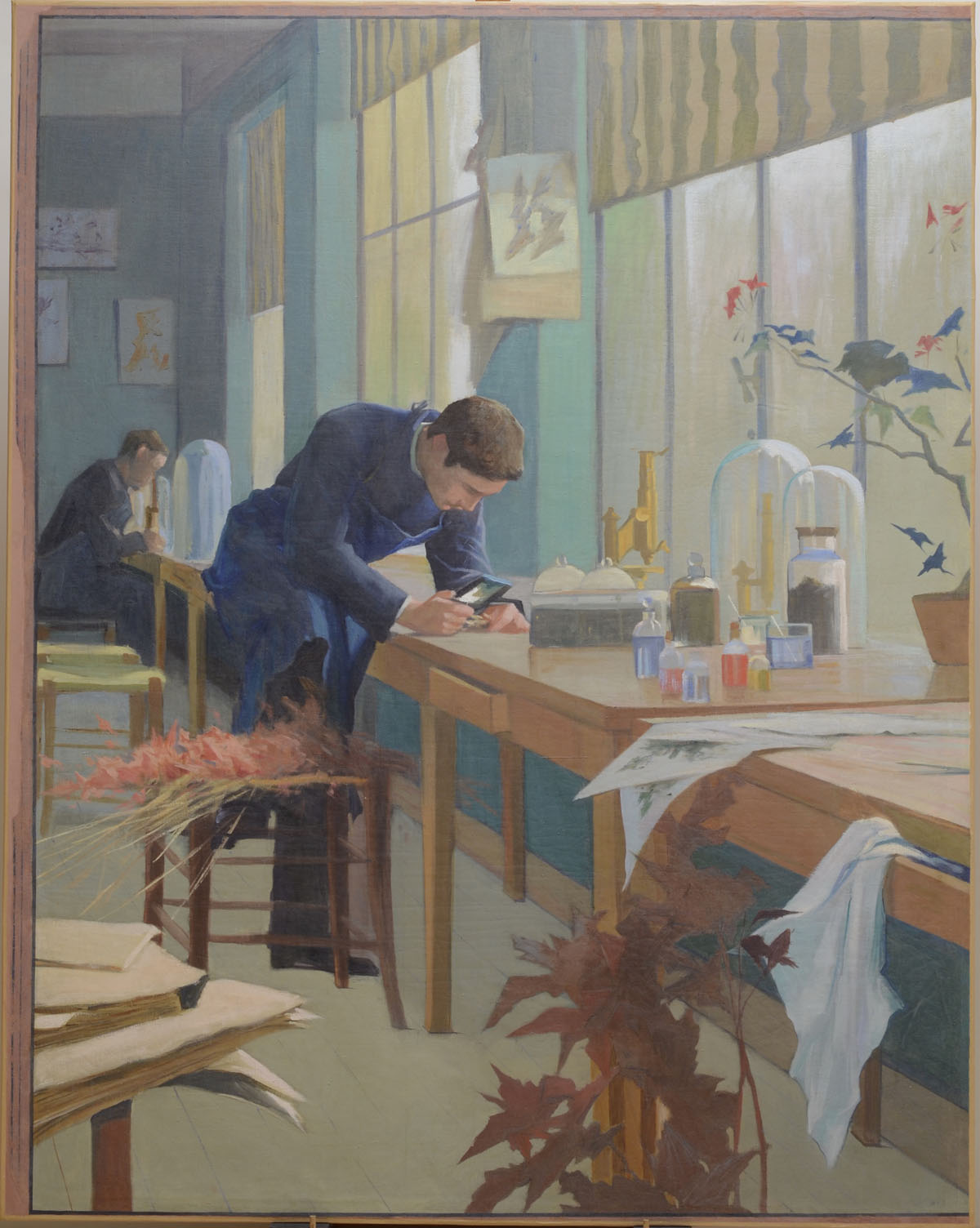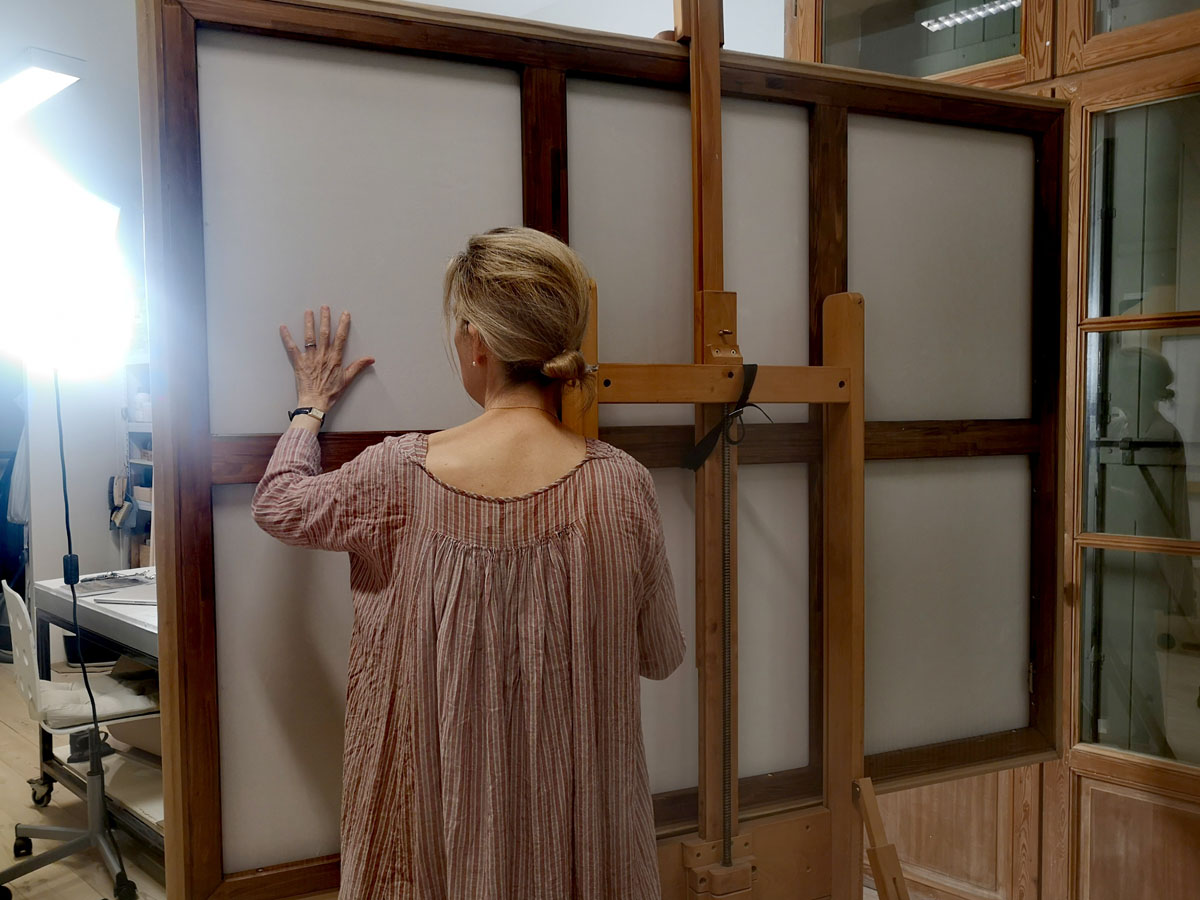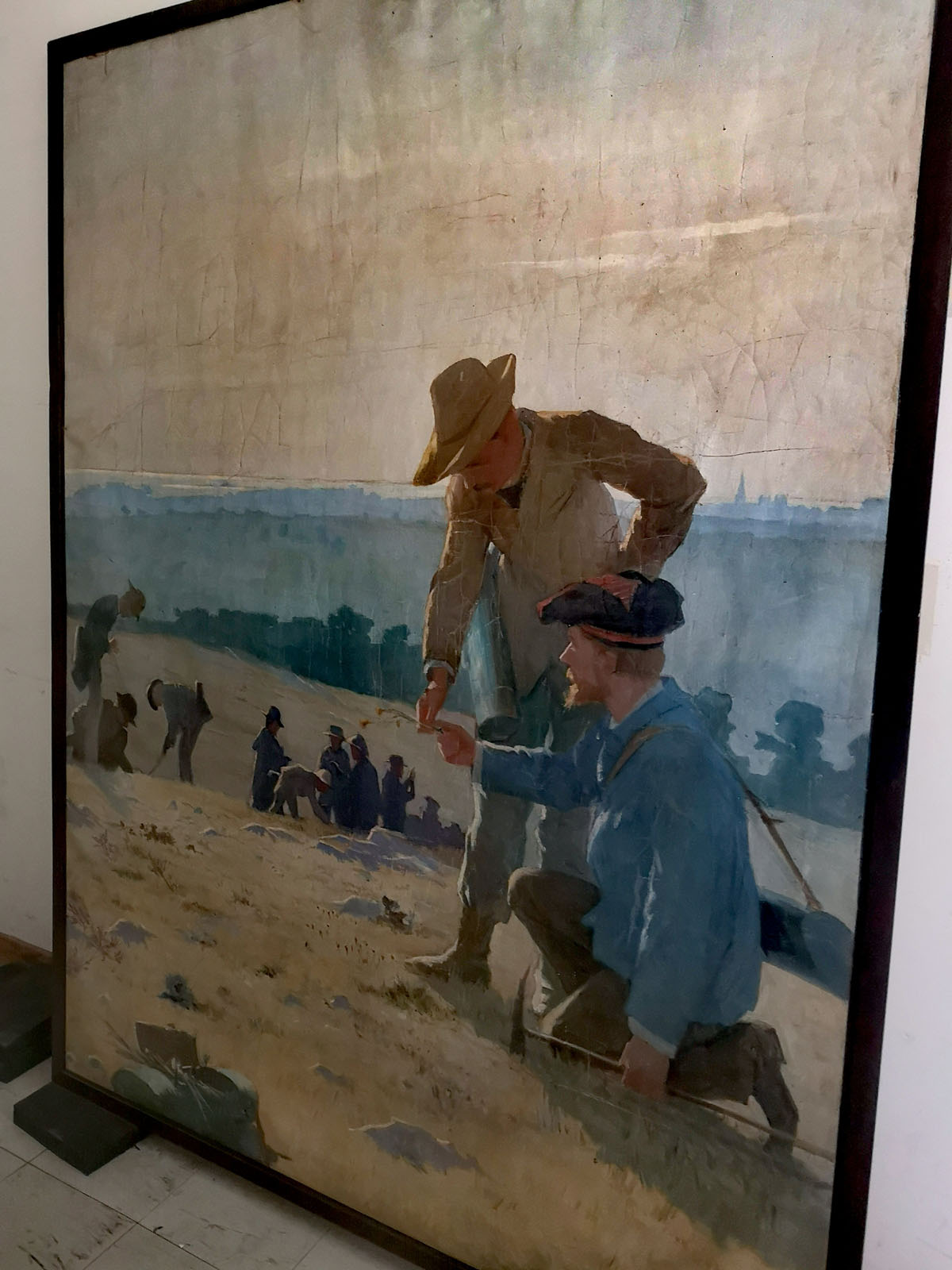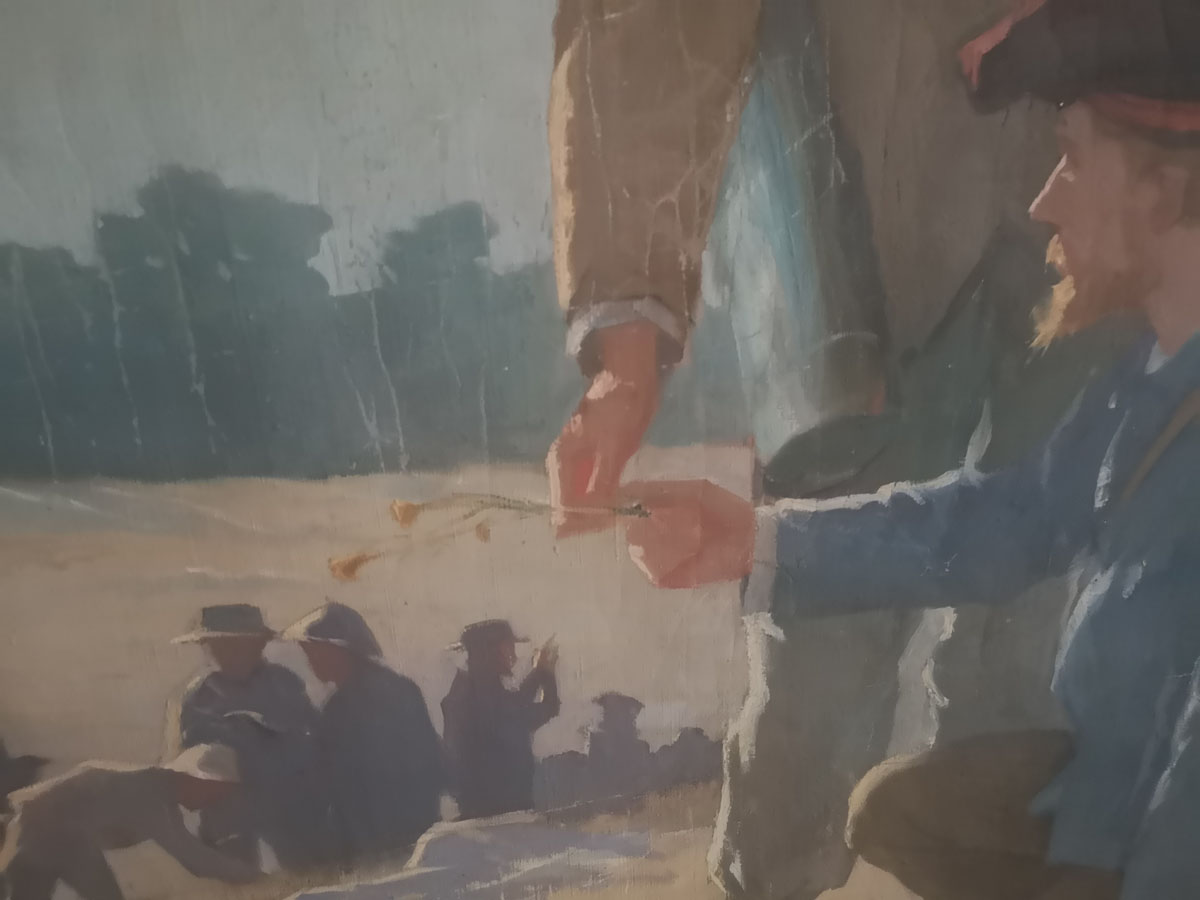When Leenhardt regains his form
From June 16 to September 4, the Beaux-Arts de Paris will host the Chaumet exhibition entitled "Végétal – L'School of Beauty."School of Beauty." Among the 400 works on display are several items from the UM's heritage, including a painting by Montpellier artist Max Leenhardt. This painting has undergone a spectacular restoration by Thierry Martel and Anne Baxter, who opened the doors of her studio to us.
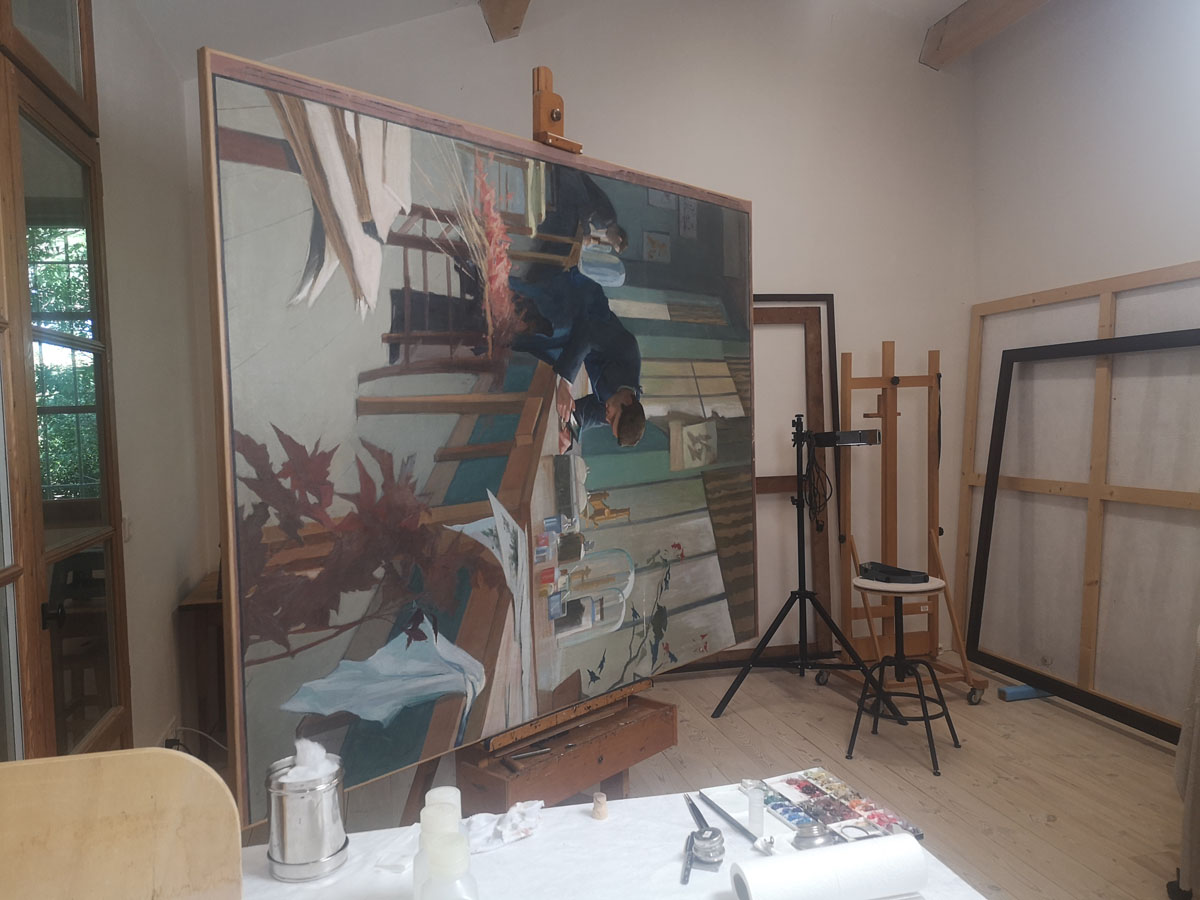
Anne Baxter welcomes us that morning at her home in the hills above Montpellier. The temperatures are still mild, but the restorer's studio is already buzzing with feverish activity. It must be said that the deadlines are tight. In less than a week, the large canvas she is working on will have to be packed up and shipped to the Palais des Beaux-Arts in Paris. Starting on June 16, art and botany lovers will have a date with the Beaux-Arts and Maison Chaumet exhibition "Végétal – L'École de la beauté" (Going out in Paris 02/14/22).
Botanical scene
Among the 400 works on display are 80 pieces of fine jewelry by Chaumet, as well as photographs byRobert Mapplethorpe, a bronze sculpture of Sarah Bernhardt, paintings by Monet, Courbet, Delacroix, Arcimboldo, and a canvas by one of Montpellier's most famous painters, Max Leenhardt. In this large painting, measuring approximately 2 meters by 1.60 meters, entitled Le laboratoire de l'ancien Institut de botanique (The Laboratory of the Former Botanical Institute), the artist depicts a man, Professor Léopold Galavielle, holding a magnifying glass and observing botanical samples. In the foreground are plants, including a Japanese-style begonia, a few bottles of liquid, a microscope, and glass bells placed in front of a glass roof. In the background, a second scientist is bent over his microscope.
"This painting was created at the end of the 19th century, around 1890," explains Véronique Bourgade, heritage curator at the University of Montpellier. In the thesis* that specialist Isabelle Laborie devoted to the subject, we learn thatit was placed with its counterpart, "Une herborisation d'étudiants dans la garrigue" (Students collecting plants in the scrubland), in the vestibule of the Richer de Belleval pavilion before being hung in the hall onthe first floor of the Institute of Botany until the end of the 1990s. It was then placed in storage to ensure its preservation until it could be restored. This restoration was finally made possible by Chaumet, which, in exchange for this loan, covered the costs of approximately €18,000.
Tears and cracks
It must be said that after more than a century on display, the painting had not escaped the ravages of time. "First, we had to carry out a meticulous cleaning because the canvas had suffered from humidity, among other things," explains Anne Baxter, a heritage restorer with extensive knowledge of Leenhardt's works and a regular collaborator with the Fabre Museum. We also had to repair and conceal a 32 cm tear and restore several badly damaged areas." The colors, which had faded over time, were re-saturated using a resin that preserves the semi-matte appearance of the canvas.
Another difficulty was the numerous cracks caused by compression of the canvas. "Another painting had already been painted on the back of the canvas with a much thicker opaque beige paint which, as it aged, exerted a mechanical compression effect on the front, causing numerous cracks. " Cracks, but also numerous small stains that were difficult to conceal due to the chemical nature of the materials used by the painter. "In some of his paintings, Leenhardt added casein to his paint and alternated layers of varnish and paint. Here, the uneven composition of the paint makes retouching a little complex, as we have to take the time to observe any chemical reactions of the products we use. This can take anywhere from several minutes to several days each time. As for retouching the matte paint, the final color is only obtained after complete drying, which takes a few minutes or even a few hours," explains Anne Baxter.
Replacing the chassis
The canvas was stretched onto a brand new frame made by heritage restorer Thierry Martel. "The stretcher used by Leenhardt was a recycled one. It was too damaged to keep, so it was decided to make a new one. The reuse of the canvas and the recycled stretcher are evidence of Leenhardt's usual economy of means," continues Anne Baxter.
This work revealed an irregular cut on the right side of the canvas, evidence that part of the painting had been removed to fit the dimensions of this recycled frame. "In a simulation, Thierry even attempted to reconstruct the original painting in a format he imagined to be square."
On the other three sides, the restorers uncovered the remains of a false frame composed of black fillets on a red ochre background. "The edges of the painting are badly damaged because they were folded and nailed to the edges of the frame. To restore them, we inserted pieces of canvas and filled in the gaps with white putty." A new frame was finally made by Pierre Susimi of ArtProtec.
Research
On display for three months at the Beaux-Arts in Paris, "The Laboratory of the Former Institute of Botany" will soonreturn to the University of Montpellier collection, where it will resume its place at the Institute of Botany once the building has been renovated. The space occupied by " Students Collecting Plants in the Scrubland, "its twin painting, will remain empty. "We estimate that the cost of restoring this second canvas will be roughly the same, i.e. between €15,000 and €20,000," explains Véronique Bourgade.
Let's hope that a patron will come forward when the next loan request is made so that the public can once again admire this magnificent painting. A word to the wise...
* Isabelle Laborie. The work, a reflection of an environment: Michel-Maximilien Leenhardt, known as Max Leenhardt (1853-1941). Art and art history. University of Toulouse le Mirail – Toulouse II, 2019. French. NNT: 2019TOU20041. tel-02901646
